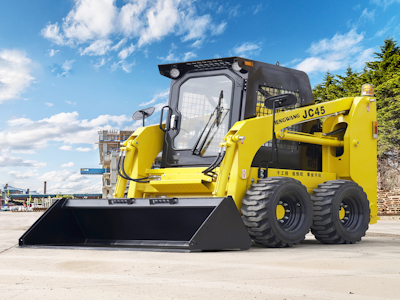


В современном мире производство сталкивается с беспрецедентными вызовами: растущая конкуренция, изменчивый спрос потребителей, необходимость снижения затрат и экологические требования. Традиционные крупномасштабные конвейерные линии, которые доминировали в индустриальную эпоху, часто оказываются слишком жесткими и ресурсоемкими для удовлетворения этих динамичных потребностей. Именно здесь на сцену выходят малые конвейеры — инновационные, гибкие и адаптивные системы, которые кардинально меняют ландшафт производства. В этой статье мы глубоко погрузимся в то, почему малые конвейеры не просто дополняют, а активно формируют будущее производственной отрасли, обсуждая их преимущества, технологические основы, экономические и экологические аспекты, а также перспективы развития.
Производство прошло долгий путь от ручного труда к массовому производству, популяризированному Генри Фордом и его конвейерными линиями. Эти системы позволили достичь невиданной ранее эффективности и масштаба, но они также принесли с собой недостатки: высокую капиталоемкость, низкую гибкость и значительные отходы. С развитием цифровых технологий и концепции Промышленности 4.0 производство начало двигаться в сторону более умных, подключенных и адаптивных решений. Малые конвейеры emerged as a key component of this transformation, offering a paradigm shift from large, monolithic systems to modular, scalable, and responsive setups. Они представляют собой не просто уменьшенные версии традиционных линий, а принципиально новые подходы к организации производства, которые лучше align with the demands of modern markets.
Малые конвейеры — это компактные, модульные производственные системы, designed to handle smaller batches or customized products with high efficiency. Unlike traditional assembly lines that are designed for mass production of identical items, малые конвейеры emphasize flexibility, reconfigurability, and integration with digital technologies. Key characteristics include:
These features make малые конвейеры particularly suited for industries such as electronics, automotive components, pharmaceuticals, and consumer goods, where customization and rapid changeovers are critical.
Adoption of малые конвейеры brings numerous benefits that directly address the limitations of traditional production methods. Let's explore these in detail.
One of the most significant advantages is flexibility. In a world where consumer preferences shift rapidly, manufacturers need to respond quickly. Малые конвейеры allow for easy reconfiguration to produce different products without major downtime. For example, a small conveyor system in an electronics factory can be reprogrammed in hours to assemble a new smartphone model, whereas a traditional line might require weeks of retooling. This adaptability reduces time-to-market and enables mass customization, where products are tailored to individual customers without sacrificing efficiency.
While initial investment in малые конвейеры can be substantial, they often lead to lower overall costs. Their modular nature means that companies can start small and expand as needed, avoiding the high capital outlay associated with large-scale systems. Additionally, reduced energy consumption, minimal waste, and higher throughput contribute to a faster return on investment (ROI). Studies show that SMEs implementing small conveyor systems can achieve ROI within 2-3 years, compared to 5-7 years for traditional setups.
Automation and precision inherent in малые конвейеры enhance product quality. Robotics and sensors ensure that each step of the production process is executed with high accuracy, reducing defects and variability. For instance, in the food industry, small conveyors with vision systems can inspect and sort products in real-time, ensuring only high-quality items reach consumers. This consistency builds brand reputation and reduces costs associated with rework and returns.
Малые конвейеры align with growing environmental concerns. Their efficient use of materials and energy reduces the carbon footprint of production. Moreover, by enabling localized manufacturing (e.g., through micro-factories), they cut down on transportation emissions. A case in point is the trend towards on-demand production, where goods are made closer to consumers, minimizing logistics and promoting circular economy principles.
The effectiveness of малые конвейеры is driven by cutting-edge technologies. Key innovations include:
Collaborative robots (cobots) are integral to small conveyor systems. Unlike traditional robots that require safety cages, cobots can work alongside humans, enhancing flexibility. AI algorithms optimize production schedules, predict maintenance needs, and improve quality control. For example, machine learning models can analyze data from sensors to detect anomalies and prevent failures before they occur.
IoT sensors embedded in малые конвейеры collect vast amounts of data on performance, energy usage, and product flow. This data is processed in real-time to enable proactive decision-making. Cloud platforms allow remote monitoring and control, making it possible to manage production from anywhere in the world. This connectivity is a cornerstone of smart factories.
Integration with 3D printing allows малые конвейеры to produce complex parts on-demand, further enhancing customization capabilities. This combination reduces inventory needs and enables rapid prototyping.
Beyond technical aspects, малые конвейеры have profound economic and social implications. They democratize manufacturing by lowering entry barriers for small businesses and entrepreneurs. This fosters innovation and job creation in high-tech sectors. However, there is a need for workforce reskilling to operate these advanced systems, highlighting the importance of education and training programs.
The future of малые конвейеры looks promising, with trends like hyper-automation, digital twins, and increased adoption in emerging markets. Challenges include high initial costs, cybersecurity risks, and the need for standardization. Nevertheless, as technology advances and costs decrease, their prevalence is expected to grow exponentially.
In conclusion, малые конвейеры are not merely an incremental improvement but a revolutionary force in production. They offer unmatched flexibility, efficiency, and sustainability, making them essential for navigating the complexities of the modern economy. As industries continue to evolve, embracing these systems will be crucial for staying competitive and driving progress towards a smarter, more resilient manufacturing future. The shift to малые конвейеры is indeed changing the future of production, and those who adapt early will reap the greatest benefits.
This article has explored the multifaceted reasons behind this transformation, from technological underpinnings to broader societal impacts. By understanding and leveraging малые конвейеры, manufacturers can unlock new levels of innovation and success.
Предыдущая статья: Транспортер как ключевой элемент современного производства
Следующий пост: Выбор надежного гусеничного экскаватора для строительных проектов что учесть